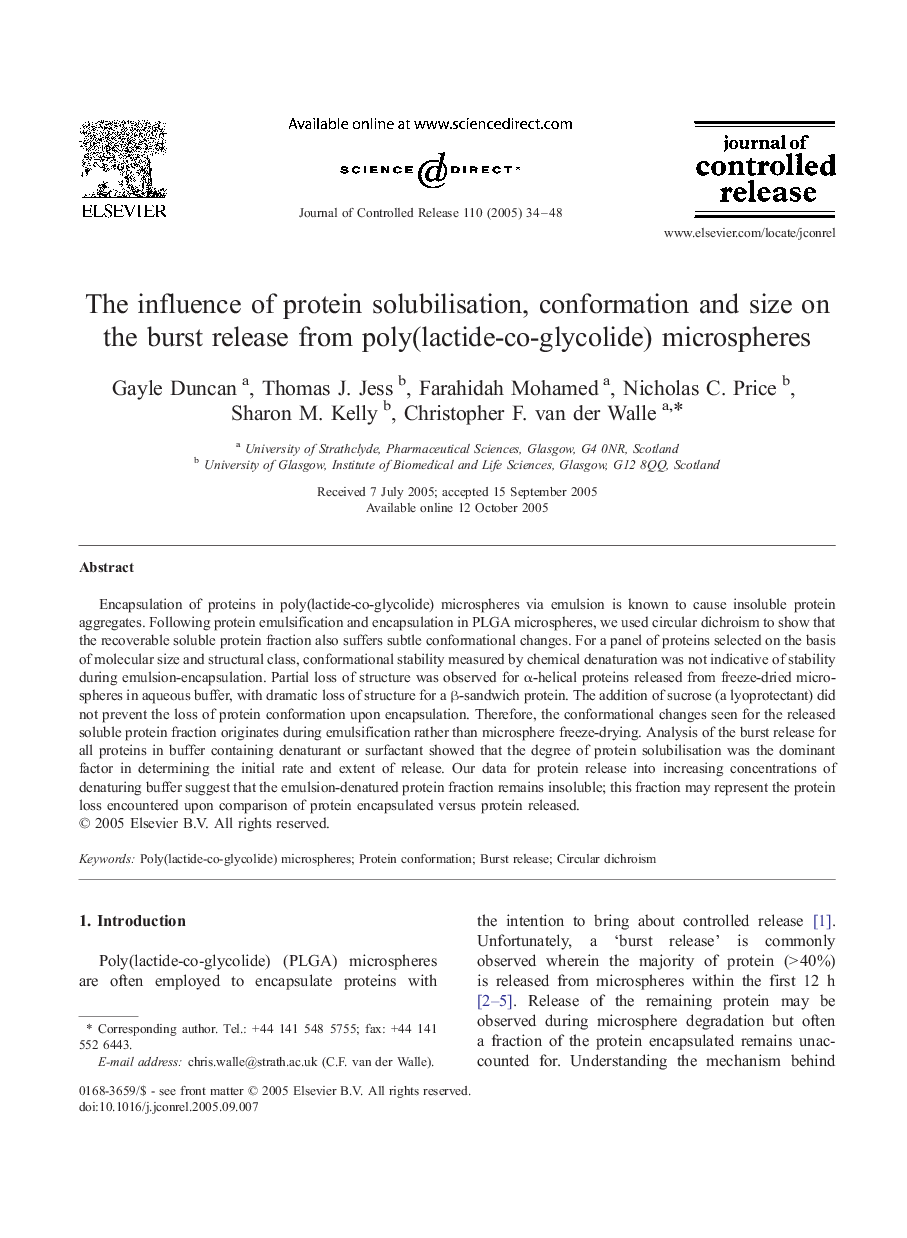| Article ID | Journal | Published Year | Pages | File Type |
|---|---|---|---|---|
| 10613301 | Journal of Controlled Release | 2005 | 15 Pages |
Abstract
Encapsulation of proteins in poly(lactide-co-glycolide) microspheres via emulsion is known to cause insoluble protein aggregates. Following protein emulsification and encapsulation in PLGA microspheres, we used circular dichroism to show that the recoverable soluble protein fraction also suffers subtle conformational changes. For a panel of proteins selected on the basis of molecular size and structural class, conformational stability measured by chemical denaturation was not indicative of stability during emulsion-encapsulation. Partial loss of structure was observed for α-helical proteins released from freeze-dried microspheres in aqueous buffer, with dramatic loss of structure for a β-sandwich protein. The addition of sucrose (a lyoprotectant) did not prevent the loss of protein conformation upon encapsulation. Therefore, the conformational changes seen for the released soluble protein fraction originates during emulsification rather than microsphere freeze-drying. Analysis of the burst release for all proteins in buffer containing denaturant or surfactant showed that the degree of protein solubilisation was the dominant factor in determining the initial rate and extent of release. Our data for protein release into increasing concentrations of denaturing buffer suggest that the emulsion-denatured protein fraction remains insoluble; this fraction may represent the protein loss encountered upon comparison of protein encapsulated versus protein released.
Related Topics
Physical Sciences and Engineering
Materials Science
Biomaterials
Authors
Gayle Duncan, Thomas J. Jess, Farahidah Mohamed, Nicholas C. Price, Sharon M. Kelly, Christopher F. van der Walle,
